I came across a Powerstat 136b dual gang autotransformer / variac the other day at the surplus shop. These are rated at 120V @ 22 Amps per section. It was in pretty sad shape and needed a lot of rework, but autotransformers are pretty handy pieces of equipment and it’s a real shame to leave one to it’s doom.
While these devices see use in many different electronic hobbyists experiments and power projects, they were commonly used as lighting dimmers, voltage correction panels, or in industrial instruments and equipment.
I’m guessing this one originally was used inside of an electrical panel of some sort as it doesn’t have the shrouds and top cap casings that are common with the ‘bench’ type autotransformers.
Below is a photo of the autotransformer in it’s original as purchased condition. It’s in pretty bad shape as you can, the biggest problem is just that it’s is very, very dirty.
One of the most obvious issues with this set was that the only thing holding the two together was the center rotating shaft which drives the armatures / brush rotors as a pair. Normally there are bolts on each corner of the aluminum castings which lock the multiples of usually 2 or 3 variable transformers together.
I started tearing it down and cleaning it up. The dirt was just a surface affliction and the equipment underneath was in great shape. Below you can see what the each looked like.
I started disassembly of the top unit first, I removed the shaft and took the armature off the center bearing hub. Again, mostly just dirty surfaces, with the bronze brush plate being a bit worn, but certainly not looking bad.
The top of the transformer wasn’t in bad shape either. The contact surface was a bit oxidized, but that’s pretty common on variacs, especially ones which have been used in a while, or if it’s position was not changed much.
I removed the transformer, spacers, insulator and shaft from the main frame and scrubbed and washed every single component in the sink and then dried it off in an oven set at 200F for about an hour.
After that bit of work, I was done cleaning one half of the autotransformer. Here you can see the reassembled one on the right. A huge difference made with just a little bit of cleaning of the rotor, the main cast aluminum frame, the wires and coils and everything else involved with one of these. It did take a bit of time but it was well worth the effort for such a useful piece of power handling equipment.
The second stage of the variable transformer stack was not in as good of shape as the other, it required a few minor repairs. First the locating pin for the transformer winding bobbin had been broken off of the casting, I drilled and tapped a hole where the locating pin was and then placed a modified 4mm bolt to serve as a new locating pin. It worked out quite well.
Unfortunately the phenolic material which insulates the back of the transformer windings from the aluminum main frame was also cracked, and rather than risk a short i decided to completely replace the plate with one cut from a thing sheet of FR4, a fiberglass composite material.
Problem solved. After this, the only thing left was to replace the main rotating shaft which connected the two armatures together. It had been slightly bent and was causing the rotating of both units to be very difficult. Everything was then re-assembled and tested and it’s working great.
I love being able to bring an old piece of equipment back from the verge of being on the trash heap. Especially when it’s stuff like this which is really useful to hobbyists and most of the problems are superficial or easy to resolve.
I also posted a narrated YouTube video slideshow of the Powerstat 136-2 repair process which has a lot more pictures and detail and you can watch it below. It’s closed captioned if you would rather read, than listen.
If you have any questions or comments, please feel free to drop me a line via Youtube or in the comments section below.

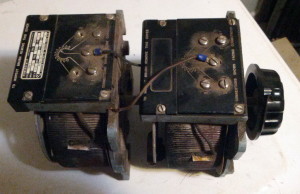
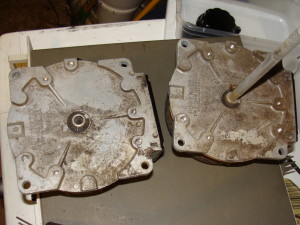
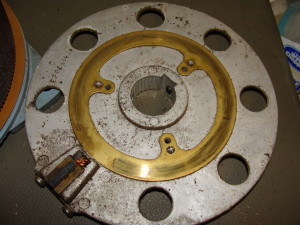
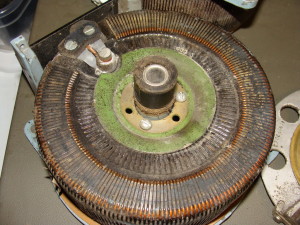
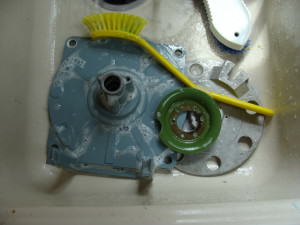
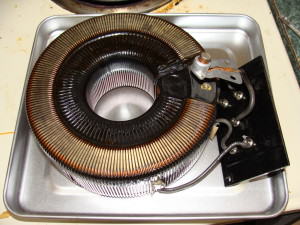
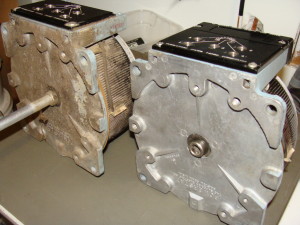
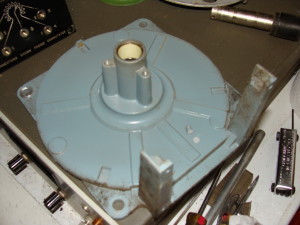
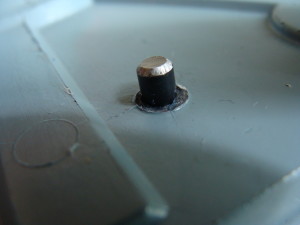
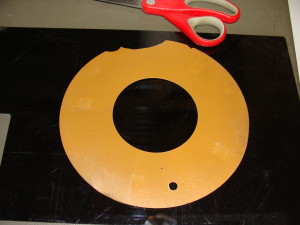
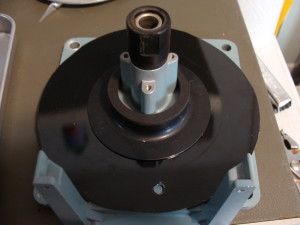
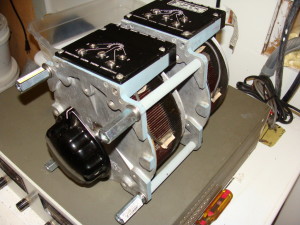
6 responses to Rebuild of a Powerstat 136-2 Dual Gang Autotransformer
I need to do something similar with a powerstat. How do you separate the windings from the aluminum base? I can’t seem to get them apart. Thanks
Nice job! It’s a pleasure to see such a quality piece of equipment cared for, and restored to its former utility and beauty. How rewarding it must be to personally see the results of your efforts. Thanks for sharing that.
Maybe your visitors would enjoy perusing the 1958 Powerstat catalog, a copy of which is preserved here:
http://lcweb2.loc.gov/master/mbrs/recording_preservation/manuals/Powerstat%20Catalog%20P258G.pdf
Hi Jon,..Just wanted to thank you for this article. I’ve had a Powerstat Type 116 in my shed for years and decided I needed to use it, but found that it needed some TLC. Your article helped me restore the unit. Thanks, again!
Hi JB, I’m glad to hear that my info was useful to you, thanks for the feedback!
hi
nice work!! I recently found the same autotransformer up in my grandfathers house. I plugged it in and it only ended up working between 40-60 volts. what should I do? look for? this is my first time ever seeing one of these so Im a newb. my unit is just one single variator not two. any suggestions?
thank you!
morgan
Thanks Morgan.
The output of a variable transformer depends on how it’s windings are connected to the input and the output terminals. It may be that your transformer was configured for the 40-60 volt range. To find out the specs for your transformer, you should do a search for “Powerstat” and the model number. I did a quick dig for Powerstat 136b and found this document: http://www.alliedelec.com/images/products/datasheets/bm/SUPERIOR_ELECTRIC/70120758.pdf
Look to match your model number, and it will tell which terminals should be used for basic operation. It’s also possible you have a customize unit, that information should be printed on the nameplate though which shows all the specifications.
Keep in mind that a variable transformer is not an isolation transformer like a normal wall wart or something along those lines. Just because you have it turned down to 1 volt or something like that doesn’t mean that you’re isolated from the mains. Touching that reduced voltage terminal can still be very hazardous.
Leave a reply to Rebuild of a Powerstat 136-2 Dual Gang Autotransformer